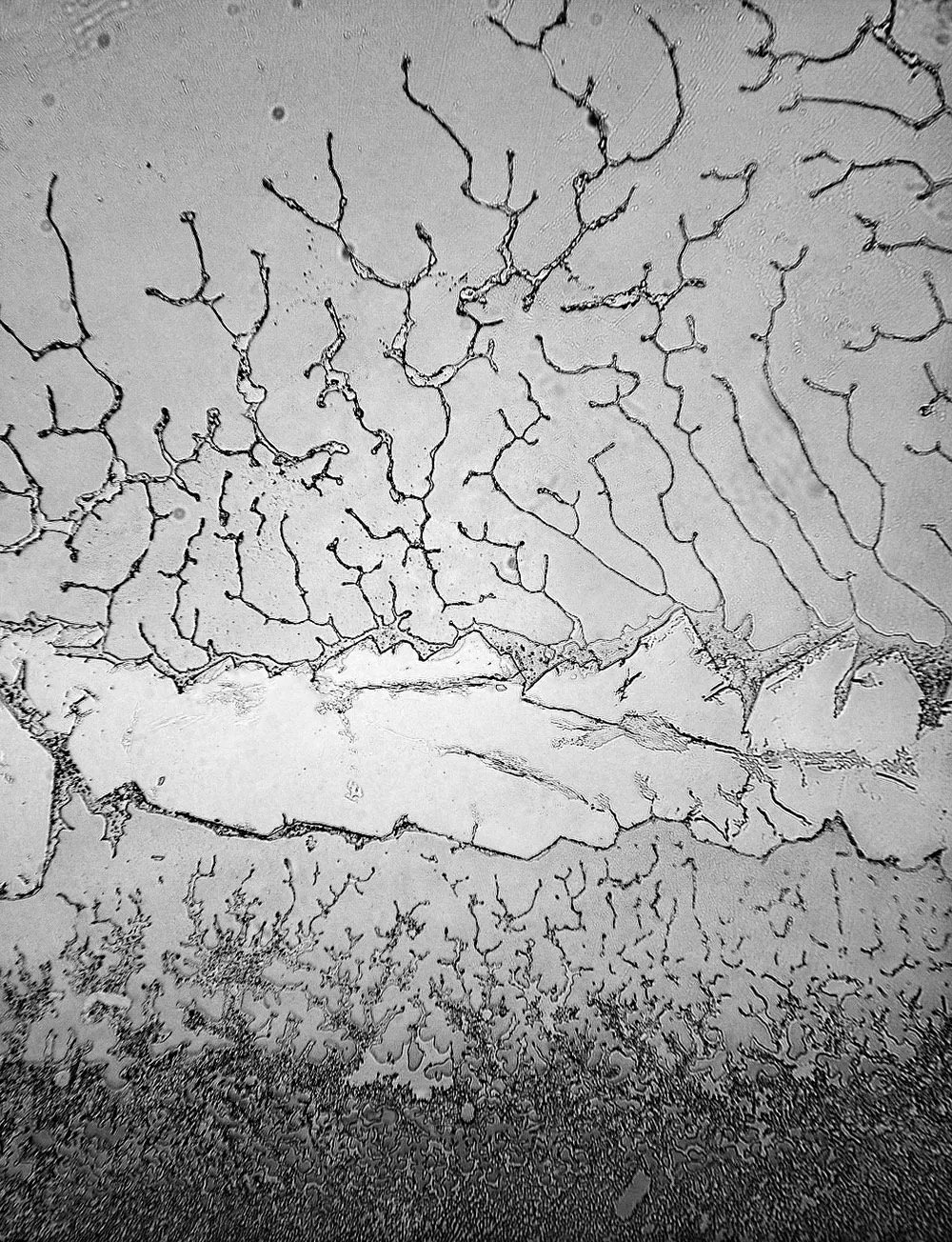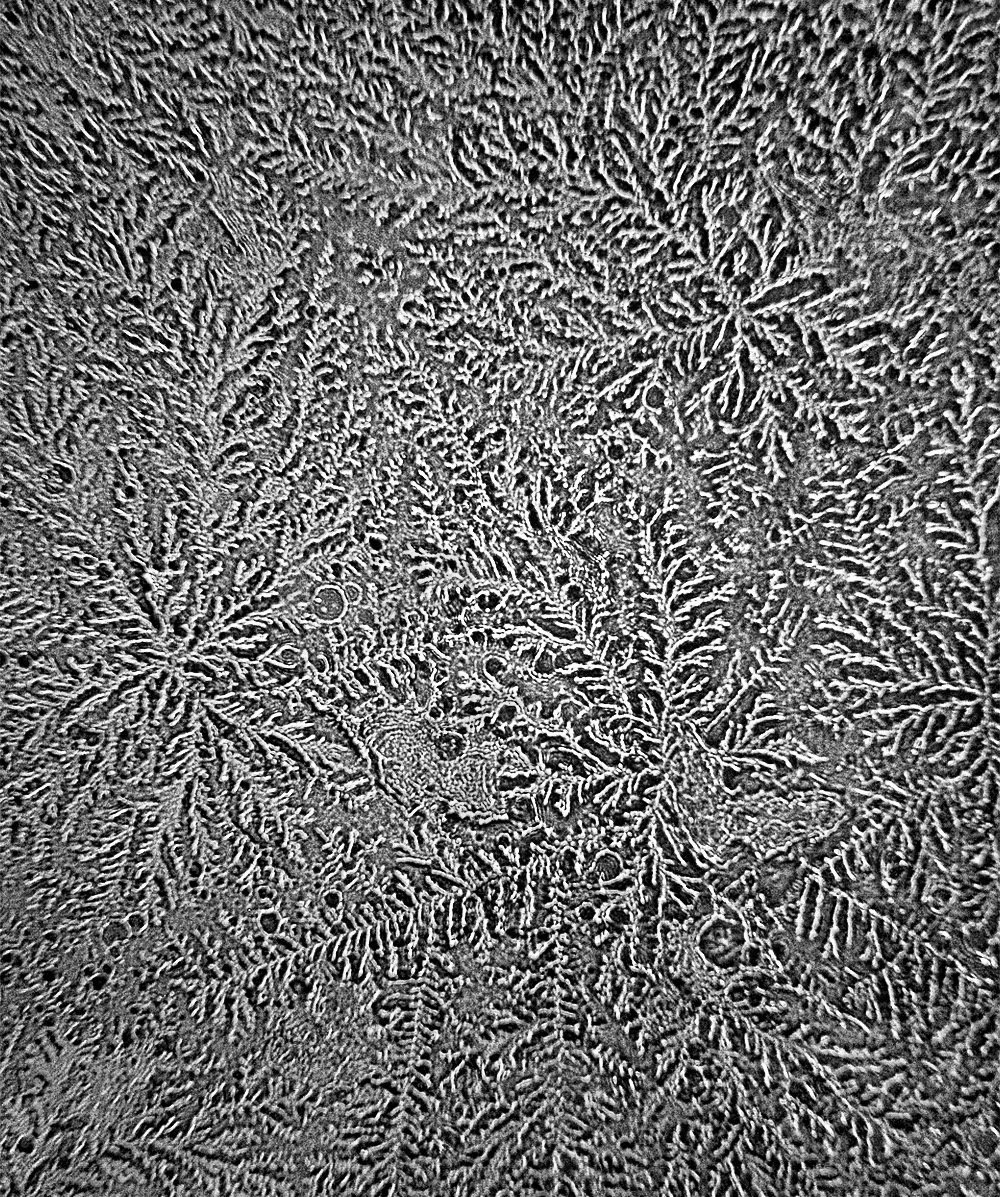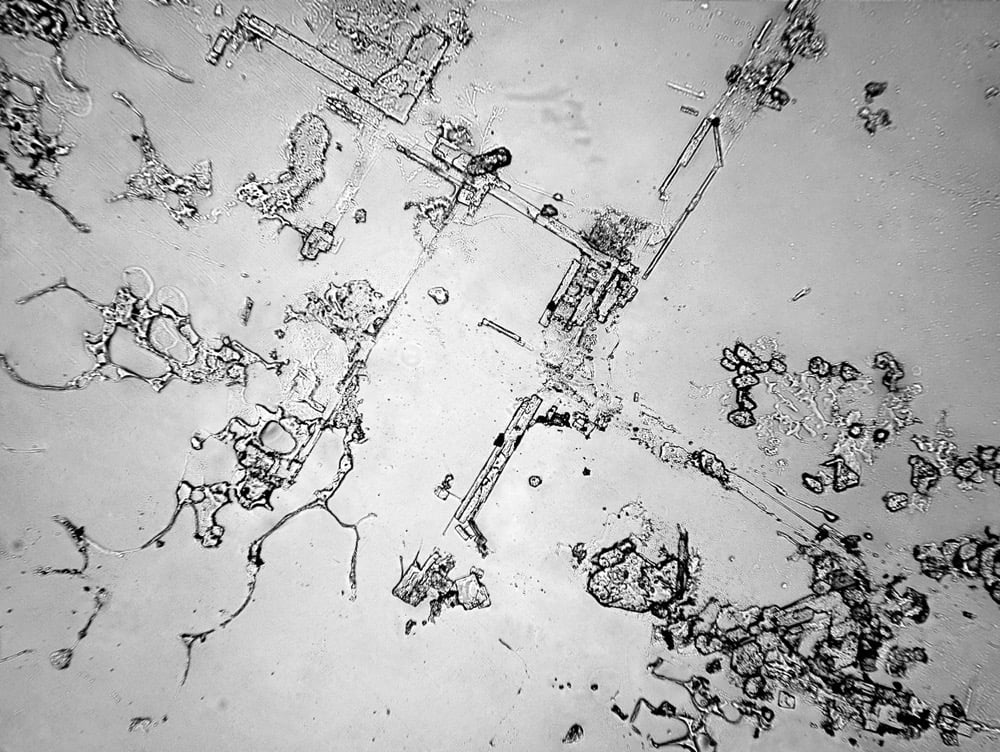The Topography of Tears



For her project Topography of Tears, Rose-Lynn Fisher used a microscope to photograph the crystalized patterns of dried human tears. Part of why the images all look different is because tears are made up of varying chemicals depending on why they’re made.
Scientifically, tears are divided into three different types, based on their origin. Both tears of grief and joy are psychic tears, triggered by extreme emotions, whether positive or negative. Basal tears are released continuously in tiny quantities (on average, 0.75 to 1.1 grams over a 24-hour period) to keep the cornea lubricated. Reflex tears are secreted in response to an irritant, like dust, onion vapors or tear gas.
All tears contain a variety of biological substances (including oils, antibodies and enzymes) suspended in salt water, but as Fisher saw, tears from each of the different categories include distinct molecules as well. Emotional tears, for instance, have been found to contain protein-based hormones including the neurotransmitter leucine enkephalin, a natural painkiller that is released when the body is under stress.
This project is also available in book form. (via austin kleon)
Update: Per an email from the photographer, I’ve corrected the post above to note that these images were taken with a normal optical microscope, not a scanning electron microscope. Thx, Rose-Lynn!





Stay Connected